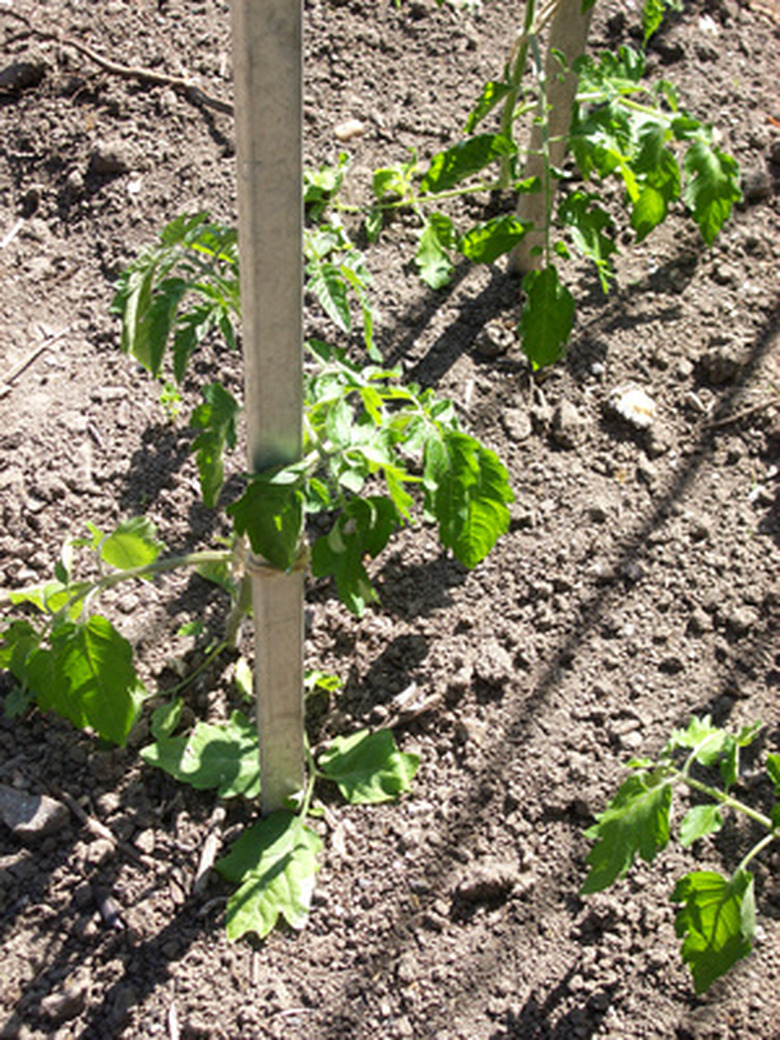Leaf Structure Of A Bean Plant
The leaf structure and arrangement of a plant is designed to provide a plant with the most surface area possible for gas exchange and exposure to sunlight. But the structure of leaves also helps botanists and horticulturalists describe and identify one plant from another. Bean plants are a group of legume species that have similar plant structures, especially in the leaves.
Types of Beans
Many legumes are commonly referred to as beans, including green beans, kidney beans, fava beans, red and black beans, chickpeas (or garbanzo beans) and soybeans. There are also many plants or foods referred to as beans that are not actually legumes, and whose leaf structure is completely different. These include castor beans, coffee beans and vanilla beans.
Leaf Arrangement
When a plant has three or more leaves arranged on a stem that shoots off of the main stem, then it is called compound leaf arrangement. Simple leaf arrangements have only one leaf on these stems. Bean plants typically have three leaves on these side stems, where two leaves are opposite each other and the third is at the tip of the offshoot stem.
- The leaf structure and arrangement of a plant is designed to provide a plant with the most surface area possible for gas exchange and exposure to sunlight.
- Bean plants are a group of legume species that have similar plant structures, especially in the leaves.
Edges and Shape
The edges of bean plants are smooth, with no serrations, 'teeth' or curves (called lobes). Botanists call this edge 'entire.' Most have a leaf shape that looks like the ace of spades in a card deck. This means that the base is cordate, or heart-shaped. The tips of string bean leaves tend to be acute (slightly pointed) or, as in the case of soybeans, acuminate (sharply pointed).
Internal Structure
The top and bottom of bean leaves are covered in a protective cuticle that restricts air flow, helps prevent sunburn and prevents excess water loss. Below this layer is the epidermis, which also acts as a protective layer while managing gas exchange. On the top side of the leaf, just below the epidermis, is a mesophyll layer. This is the layer where most of the photosynthesis takes place. Nestled below that layer are the various other functions of the leaf, notably the veins that hold the xylem (water transport) and phloem (nutrient transport).
- The edges of bean plants are smooth, with no serrations, 'teeth' or curves (called lobes).
- Nestled below that layer are the various other functions of the leaf, notably the veins that hold the xylem (water transport) and phloem (nutrient transport).
Considerations
To get the most from beans, they should be planted where the leaves receive full sunlight, or at least six hours of direct sunlight per day. The cuticle helps prevent sunburn in these conditions, and it allows the mesophyll layer to produce as much starch for the growing seed pods (the edible beans) as possible. While it is possible to feed beans through the leaves with foliar feed, this is nearly as effective as providing rhizobia bacteria for the roots. These microbes attach to the roots, and turn atmospheric nitrogen into a rich food source for legumes such as beans.
